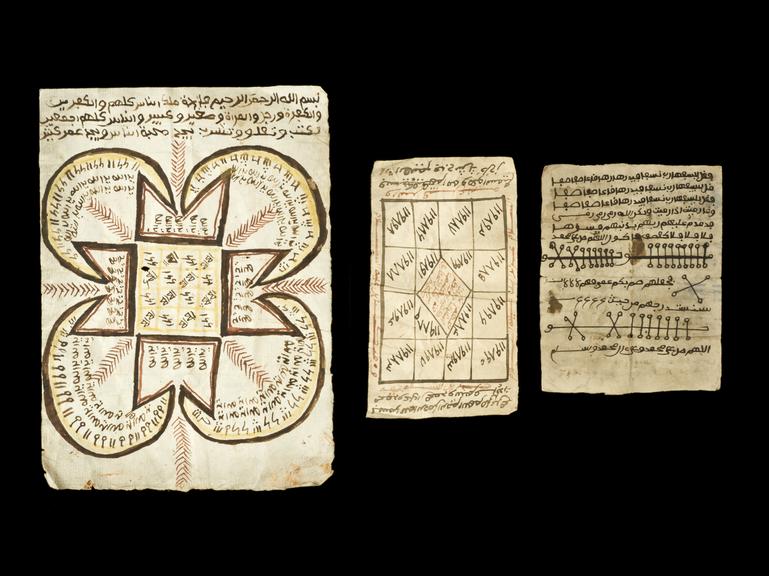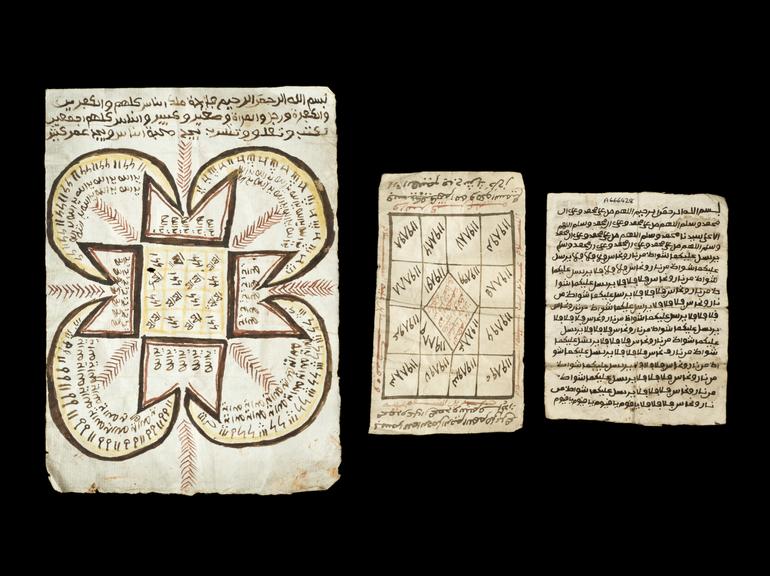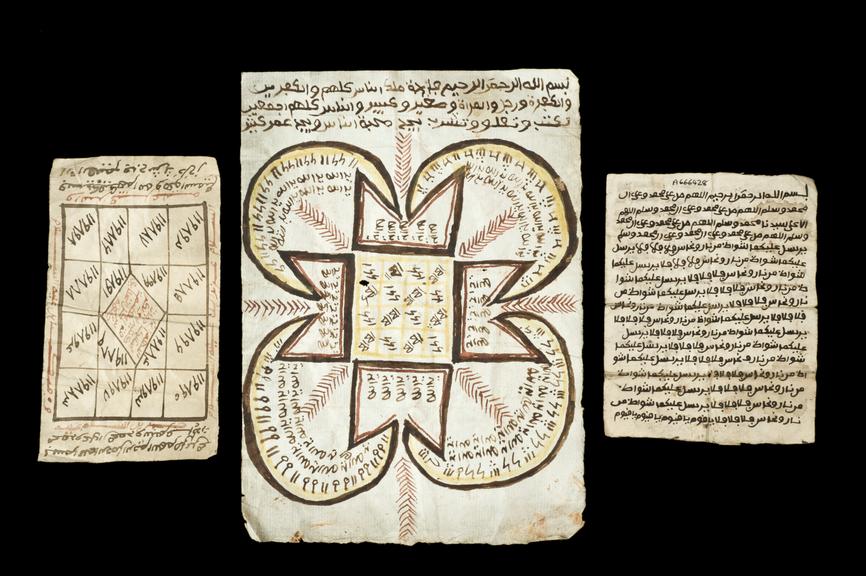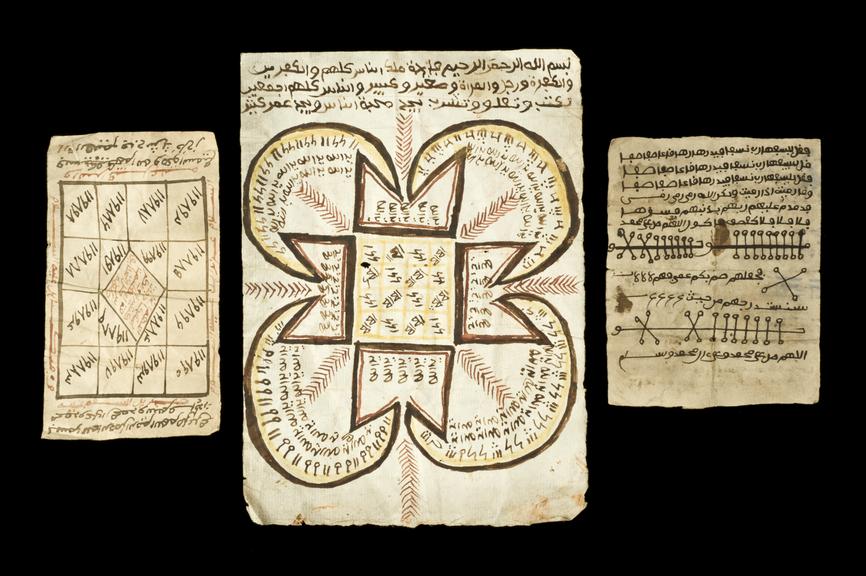39 pieces of paper inscribed with handwritten charms and cabbalistic
39 pieces of paper inscribed with handwritten charms and cabbalistic, designs, amuletic, found by Sir Robert Baden-Powell during English Expedition, 1895, Ashanti, Ghana, 1801-1895




42 Pieces of paper inscribed with handwritten charms and cabbalistic, designs, amuletic, found by Sir Robert Baden-Powell during English Expedition, 1895, Ashanti, Ghana, 1801-1895
39 pieces of paper inscribed with handwritten charms and cabbalistic, designs, amuletic, found by Sir Robert Baden-Powell during English Expedition, 1895, Ashanti, Ghana, 1801-1895
Handwritten talisman (personal charm), found by Sir Robert Baden-Powell during English Expedition, Ashanti people, Ghana, 1890s
The use of written personal charms, or talisman, is common across a wide range of cultures. They may be intended to provide protection or ensure good health for an individual. They may also be used to harm or otherwise disable an enemy. In many African societies, the production of such written charms was one of the roles expected of the local shaman. This written talisman is shown on the right, alongside two other examples (A666428/3 and A666428/4).
The talisman was one of a number collected by Robert Baden-Powell. Known worldwide as the founder of the Scout movement, Baden-Powell had a lengthy military career and this object dates from that period of his life. Almost certainly it was found while he was part of the British colonial forces who in 1895 invaded the Ashanti areas of West Africa, in what is now modern day Ghana. This was one of a series of conflicts between the Ashanti people and the British Empire that took place throughout the 19th century.
Handwritten talisman (personal charm), found by Sir Robert Baden-Powell during English Expedition, Ashanti people, Ghana, 1890s
The use of written personal charms, or talisman, is common across a wide range of cultures. They may be intended to provide protection or ensure good health for an individual. They may also be used to harm or otherwise disable an enemy. In many African societies, the production of such written charms was one of the roles expected of the local shaman. This talisman, which uses a combination of text and patterns, is shown on the left, alongside two other examples (A666428/2 and A666428/4).
The talisman was one of a number collected by Robert Baden-Powell. Known worldwide as the founder of the Scout movement, Baden-Powell had a lengthy military career and this object dates from that period of his life. Almost certainly it was found while he was part of the British colonial forces who in 1895 invaded the Ashanti areas of West Africa, in what is now modern day Ghana. This was one of a series of conflicts between the Ashanti people and the British Empire that took place throughout the 19th century.
Handwritten talisman (personal charm), found by Sir Robert Baden-Powell during English Expedition, Ashanti people, Ghana, 1890s
The use of written personal charms, or talisman, is common across a wide range of cultures. They may be intended to provide protection or ensure good health for an individual. They may also be used to harm or otherwise disable an enemy. In many African societies, the production of such written charms was one of the roles expected of the local shaman. This talisman, which uses a combination of text and patterns, is shown in between two other examples (A666428/2 and A666428/3).
The talisman was one of a number collected by Robert Baden-Powell. Known worldwide as the founder of the Scout movement, Baden-Powell had a lengthy military career and this object dates from that period of his life. Almost certainly it was found while he was part of the British colonial forces who in 1895 invaded the Ashanti areas of West Africa, in what is now modern day Ghana. This was one of a series of conflicts between the Ashanti people and the British Empire that took place throughout the 19th century.



